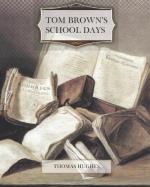|
This section contains 156 words (approx. 1 page at 400 words per page) |

|
The bulk of Hughes's writing addressed economic and political issues, but in 1861 he wrote a sequel to Tom Brown's Schooldays called Tom Brown at Oxford. The sequel gives a picture of life at a British university where sports and parties seem to overwhelm academic studies. The novel focuses on Tom's efforts to sort out his priorities.
Two notable motion-picture versions of Tom Brown's Schooldays were released in 1940 and 1951. The first of these was produced by David O. Selznick in America, but directed by an Englishman, Robert Stevenson. This movie reflects an Englishman's concerns about World War II and consequently emphasizes Tom's victory over Flashman as an example of right triumphing over might. Directed by Gordon Parry, the 1951 movie emphasizes period authenticity and Tom's school life, although Flashman remains a cruel antagonist. Of the two, the latter film better captures the mood of the novel and is...
|
This section contains 156 words (approx. 1 page at 400 words per page) |

|




